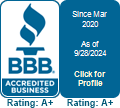
Your Ultimate Guide to Understanding the 529 Savings Plan
The typical American has been unable to afford the rising costs of higher education for many years. Consequently, several young people are leaving college with debt after graduation. So, what is the best way to cut costs and ensure your educational budget is optimized? Perhaps a 529 plan would be ideal because of its advantages and versatility.
Knowing how it operates can be extremely helpful, whether you are a parent thinking about your child’s future education or an individual thinking about your own educational goals.
Let us explore what a 529 plan is, how it works, and why it’s a valuable asset in your financial arsenal.
What is a 529 Plan?
A 529 college plan is a tax-advantaged investment account intended to assist families in setting aside money for future education expenses. These plans, which take their name from Section 529 of the Internal Revenue Code (IRC), can be utilized to pay for several allowable costs at more than 6,000 US schools, universities, and hundreds of foreign establishments.
How Does It Work?
A 529 plan operates much like a Roth IRA or a workplace 401(k) in that your contributions are invested in many options, such as mutual funds or exchange-traded funds (ETFs), to grow your investment over time. One of the key benefits of a 529 plan is that your earnings grow tax-deferred, and withdrawals used for qualified education expenses are entirely tax-free at the federal level. Additionally, many states offer tax incentives for residents who contribute to their state’s 529 plan.
The two types of 529 plans are College Savings Plans and Prepaid Tuition Plans.
1. College Savings Plan
Since elementary and secondary school tuition became qualified costs for 529 plans in the 2017 tax bill, the most popular 529 plan is the college savings plan, sometimes known as The Education Savings Plan.
This plan enables you to make after-tax contributions to an investing account for a chosen beneficiary (maybe your child, grandchild, niece, nephew, family friend, or even you). The funds accumulate tax-deferred. If the distributions are related to approved educational expenses, they are tax-free.
You can use the funds for allowable educational expenses at eligible institutions nationwide, including colleges, universities, vocational schools, and even certain international institutions.
2. Prepaid Tuition Plans
Prepaid tuition plans allow you to prepay tuition expenses at the present rates for use in the future. These plans can protect against tuition inflation, offering peace of mind for families concerned about rising education costs. However, only participating colleges and universities will allow a 529 participant to purchase these credits on behalf of the plan’s beneficiary. Additionally, these credits are not transferable to primary or secondary schools, nor are they eligible for use toward room and board.
The Pros of 529 Plans
Taxation Advantages:
The tax advantages that come with a 529 plan are among its biggest perks. As mentioned earlier, as long as you use the money for eligible educational costs, contributions to the plan grow tax-free, meaning any earnings are not liable to Federal Tax. Some states now provide tax credits or deductions for contributions to their 529 plans to increase the tax benefits.
Accessibility and Flexibility:
The 529 plans offer a great deal of both accessibility and flexibility. Contributions can be made by families of all income levels because there are no age or income restrictions. You can also utilize the money at any eligible U.S. educational institution, including colleges, universities, technical schools, and select foreign establishments.
Ownership and Control:
Even after your child reaches college age, you are still the legal owner and controller of the account when you use a 529 plan. You can alter the beneficiaries, keep the money for future educational pursuits, utilize it for your education, or cover eligible educational expenditures of other family members (without any costs or penalties). Also, the owner has two annual changes to their 529 plan investment selections.
Gift and Estate Planning:
The 529 plans offer unique gifting opportunities, allowing family members and friends to contribute to a child’s education fund. Contributions may qualify for the annual gift tax exclusion, and you can spread contributions over five years without incurring gift tax consequences.
Assets Transferred To Retirement Savings:
A Roth IRA can receive assets from a 529 plan starting in 2024 for beneficiaries of plans that have been in operation for at least 15 years. The beneficiary’s yearly contribution cap and a lifetime maximum of $35,000 will apply to the transfer.
Creditors Cannot Access 529 Money:
If a beneficiary’s parents or other 529 contributors file for bankruptcy or face debt collection from creditors, the money contributed to a 529 plan will be protected.
Cons of 529 Plans
Limited Investment Options
The 529 plans are not good if you have strong preferences regarding how you want the money you save invested. The selection of investment options available to account holders in financial institutions that oversee 529 plans is usually restricted.
Investment Risks:
College savings plans are subject to investment risk, and returns are not guaranteed. It’s crucial to choose investment options that align with your risk tolerance and investment goals
Penalties For Non-Qualified Withdrawals
If your child does not choose a career path of college or higher education, you can nominate another beneficiary. But, if you withdraw funds from a 529 plan or use it for non-qualified expenses, the earnings portion of the withdrawal may be subject to Federal Income Tax and a 10% penalty. Some states may also impose additional penalties or recapture tax benefits.
Pre-College Costs Have Withdrawal Limits:
You can only withdraw $10,000 annually from your child’s or grandchild’s 529 plan to cover tuition if they attend a private elementary, middle, or high school. However, at the college level, additional permissible costs will be covered by 529 funds, such as books, computers, software, and room and board.
May Impact Financial Aid
Minor students must declare any 529 plans parents have invested in as parental assets on their FAFSA application for Federal Student Aid. When weighed against the student’s and parents’ incomes, the parents’ assets have little effect. However, withdrawals from a grandparent-owned 529 plan are not reported on the Free Application for Federal Student Aid (FAFSA), potentially reducing the impact on financial aid eligibility. However, Federal Financial Aid choices are made based on the criteria, whether or not parents possess a 529 plan.
How to Get the Most Out of Your 529 Plan
1. Start Early
If you want to save for college, time is your biggest ally. Your assets can grow and earn compound interest if you contribute to a 529 plan early. Even modest monthly donations can mount up nicely over the years.
2. Regular payments
Set up automatic payments to guarantee regular and methodical savings to your 529 plan. With this strategy, you can accumulate a sizeable amount over time without worrying about making upfront contributions.
3. Investigate Your Investment Alternatives
The majority of 529 plans provide a variety of investment alternatives, such as specific fund selections and age-based portfolios. When choosing the best investment plan for your needs, consider your time horizon, investing preferences, and risk tolerance.
4. Involve Family and Friends
Ask family members and friends to contribute to your child’s 529 account on milestones like birthdays or holidays. In addition to accelerating account growth, this cooperative effort can strengthen family ties.
5. Stay Informed
Remain aware of any changes to tax laws, financial assistance policies, and the expense of education. Update and review your 529 plan regularly to ensure it stays current with changes in the educational landscape and supports your goals.
To Conclude
In a world of financial planning, few tools offer the combination of tax benefits, flexibility, and versatility that a 529 plan provides. Knowing the benefits of a 529 plan can make all the difference in the world when it comes to reaching your financial and educational objectives, whether saving for your child’s education or your lifelong learning journey. Take the first step toward realizing the potential of this worthwhile investment vehicle by investigating your possibilities.


